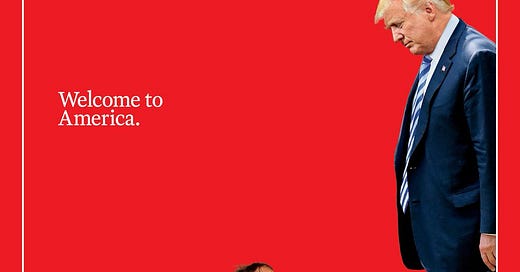Now that President Trump has caved on his sadistic policy of confiscating babies from immigrant mothers arriving to plead for asylum, we must ask: where are the kids?
The new policy is bad enough. It will jail kids with their parents while the government processes their cases (which may be illegal after 20 days). But it gets much worse.
The government has lost track of some 6,000 immigrant kids already in custody. The same appears to be happening with this new cohort. The government has scattered 2,000-some kids to shelters around the country. Federal officials aren’t saying where they are, how they are being treated, or who they are with. Mum’s the word.
What conclusion can we draw from a republican form of government willing to mistreat children? To answer that, let’s consider who’s in favor of such policies. The people most supportive of Trump’s sadism, or who express indifference to it, fit into a clearly defined demographic profile: white people over 65.
Today, the US Census released new figures showing the US population is getting older and more diverse. “Non-Hispanic whites are shrinking in population, while all other race and ethnic groups grew,” reported Bloomberg. At the same time: “By 2035, Americans age 65 and older are forecast to outnumber kids for the first time.”
Yesterday, a reporter went to Mesa, Arizona, a suburb of the state’s capital city, to ask Trump supporters for their views. With one exception, every interviewee was white and over 65. They blamed the parents, the Democrats, the media, the law—anything and anyone but the president, who, on the same day, reversed his own policy. Given this depth of denial, you start wondering if this generation of Americans is willing to look the other way, on pretty much anything being done to anyone, as long as the president puts walls up to immigrants seeking the blessings of freedom.
In April, the National Academy of Arts and Sciences published a study explaining what really happened in the election of Donald Trump. It wasn’t economic hardship among white working class Americans that put Trump in power. It was “status anxiety” among white Americans, period, according to Diana C. Mutz, a professor of political science at the University of Pennsylvania. She wrote:“Using a representative panel from 2012 to 2016, I find that change in financial wellbeing had little impact on candidate preference. Instead, changing preferences were related to changes in the party’s positions on issues related to American global dominance and the rise of a majority–minority America: issues that threaten white Americans’ sense of dominant group status” (My italics.)
She added:
“Candidate preferences in 2016 reflected increasing anxiety among high-status groups rather than complaints about past treatment among low-status groups. Both growing domestic racial diversity and globalization contributed to a sense that white Americans are under siege by these engines of change” (My italics.)
Let’s try to put this together. Baby boomers are the richest and most politically powerful cohort to have walked the earth due to the enormous expansion of democracy that took place in the years after World War II. That expansion was premised on a compromise: that those allowed into the franchise, those allowed to benefit from federal policy and the tax dollars paying for it, were white.
That compromise started to break down in the 1960s with the signing of laws like the Civil Rights Act as well as the empowerment of black Americans. But even then, white conservatives could work the margins of the deal, pretending to honor its basic structure while defending state’s rights and starving the federal government.
That compromise shattered in two significant ways: with the election of the first African-American president and with the sudden awareness among rich politically powerful white baby boomers that the country was becoming unrecognizable.
That’s when “conservatism” became insufficient. That’s when “family values,” “limited government,” “fiscal responsibility” and other ideals were no longer “conservative enough.” An emergency was brewing after 2008. Time to seek out and destroy threats to the baby boomers’ privilege and wealth. That’s when Trump became president.
In raging against Trump’s sadism, it’s only natural to compare the internment of babies in government-run camps to Nazi Germany. But that’s not quite accurate.
In a real sense, we are seeing the rise of a specific kind of fascism—tyrannical rule by a geriatric class that has abandoned the democracy that so richly rewarded it in favor of punishing brown people and forcing the rest of us to pay for their old age.
Time is set to publish a magazine cover showing a towering Trump over a wailing child. That’s a picture of evil, but it’s also a picture of our political present.



